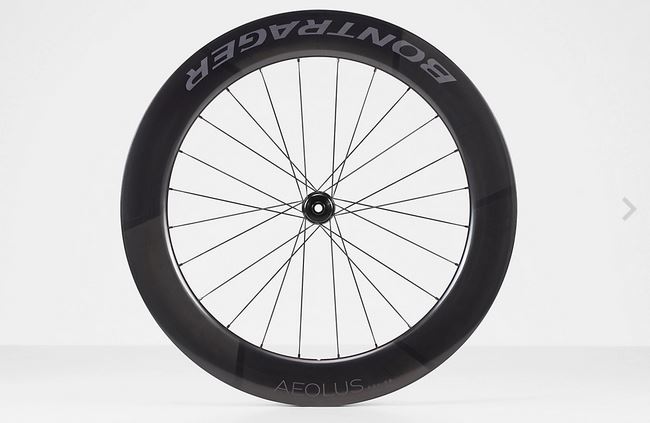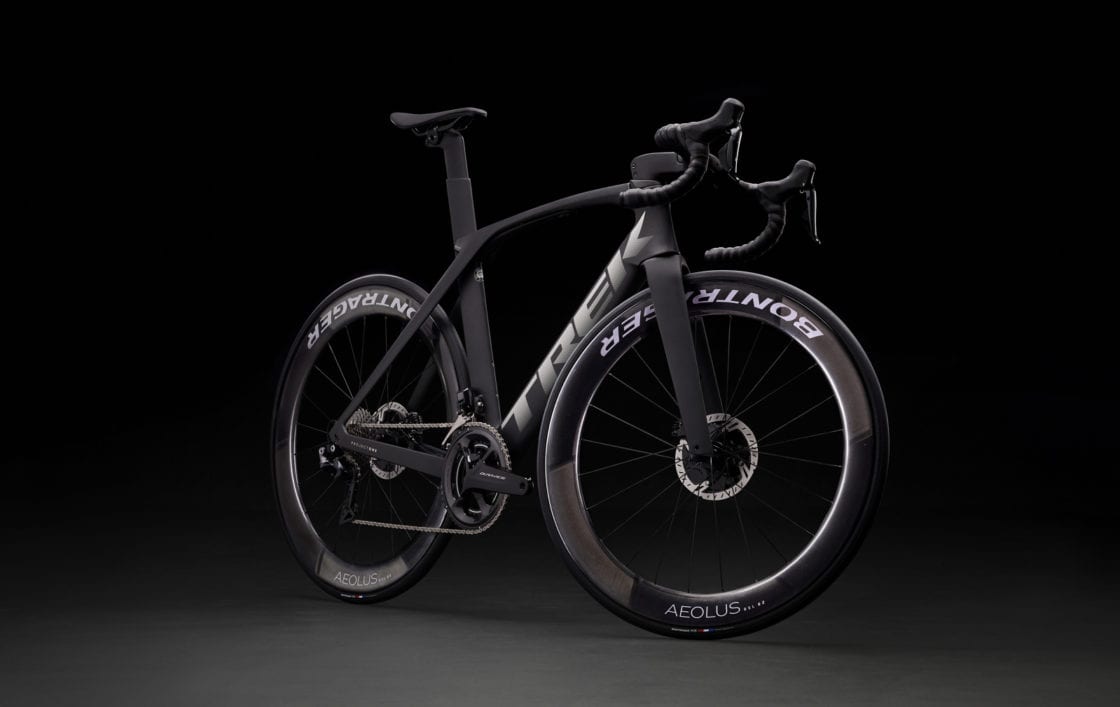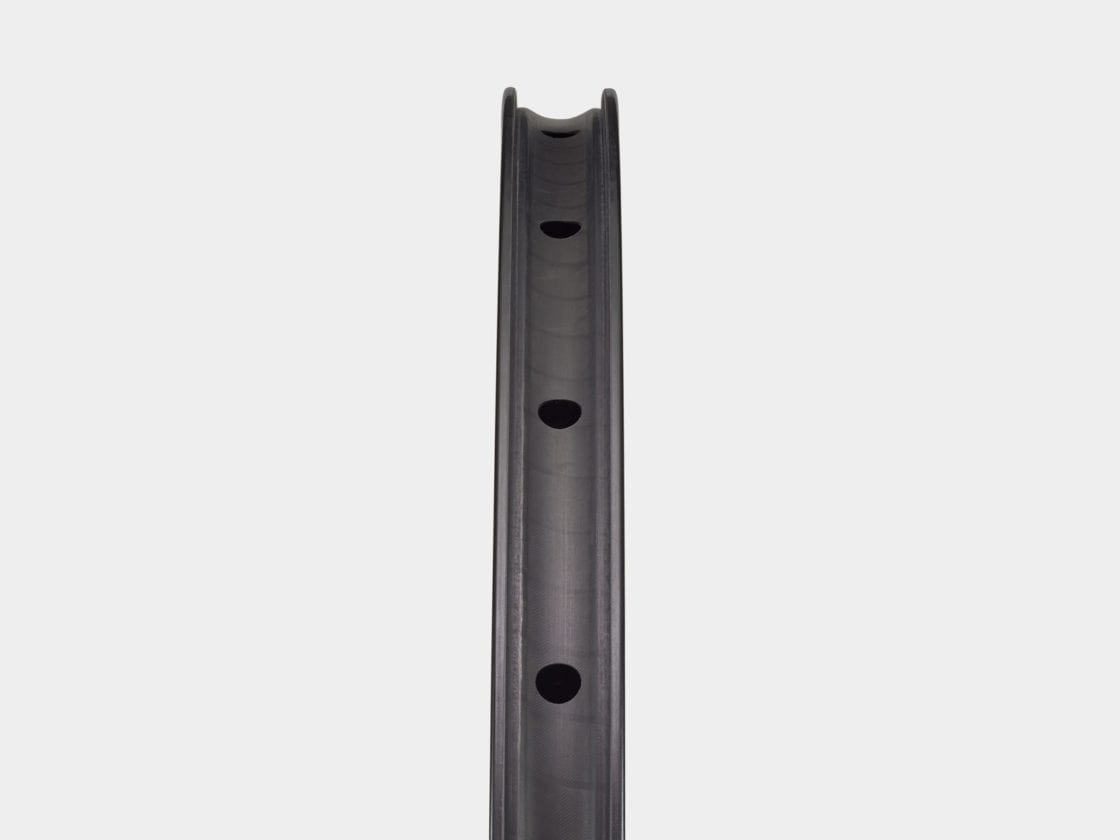Trek launches new Bontrager Aeolus RSL wheels
New wheels designed to provide improved aerodynamics and stability

Trek has released a new series of wheels that are sure to be of interest to triathletes. Focusing on aerodynamics and stability, the new Aeolus RSL 75 will no-doubt be the most popular option for triathletes, but many will want to pair a rear 75 mm-deep wheel with the shallower 51- or 62-mm version on the front for a speedy set up that will offer even more stability in high crosswind situations – can anyone say Kona?

The Aeolus RSL 51, 62 and 75 wheels all have a 30-mm outer width and 23-mm inner width. That inner width is 2 mm greater than comparable Aeolus XXX models. The dimension gets the best shape out of 25c tires to minimize rolling resistance. Also, you get the best airflow with 25c; 28c add a bit more drag, but still work well on the new wheels.
While all the wheels share the same widths, each has its own wind-cheating shapes to work with its specific depths. After engineers ran HEEDS 3D optimization software, for months, they got a collection of shapes. Some were fast, but a little less stable. Others were more stable, but not as fast. For each depth, they targeted the sweet spot, balancing both speed and stability.
What exactly is stability in a wheel?
As part of the development process, engineers equipped some bikes with aero sensors. Experienced riders took these bikes out for some rides and logged their impressions, especially when things felt unstable or twitchy. Engineers compared those observations with data collected, such as wind speed and yaw angle.
A common theory is that instability is caused when a wheel stalls: there’s an imbalance of pressure on the sides of the wheel, with more turbulence on one side. Yet, Bontrager’s engineers found that it was something other than a stall, for the most part, causing instability. “What we really found was that it was the change of side force,” says John Davis, aerodynamicist at Trek. “Imagine you’re riding in an open farm area and there’s a constant crosswind. You can feel a crosswind. You know it’s there, but you feel fine. But when a truck passes you and it blocks that crosswind for a second, then you feel kind of sketchy because the side force goes down a lot because the crosswind got blocked. Then you are in the wake of the truck, where the yaw angle is changing a lot. So, we really worked on reducing that change in side force that you feel that connects to the stability feeling.”
Once Davis had some top wheel designs, he took them to the wind tunnels in San Diego and Wichita State University. “The part that was really interesting to me, the geeky aero details, was that usually there is a tradeoff between low yaw—calm conditions—and high yaw, really high crosswind conditions. Usually, you have to choose one or the other for the performance of a wheelset. But for this wheelset, we were able to reduce the drag at low yaw, while also delaying that stall angle and improving the performance at high yaw,” Davis says.
Related: 2021 Buyer’s Guide – Tri-friendly wheels
Rolling resistance put in the mix
With the new Bontrager Aeolus RSL wheels, managing rolling resistance was also a priority. Rolling resistance figures were mixed into the number crunching that the company’s supercomputers had to do.
“We started this project using the equipment we developed for the R3 tire,” says Claude Drehfal, wheel-design engineer and the lead engineer for the R and D of these wheels. “It’s the treadmill rolling resistance machine, which can realistically mimic rolling resistance in a controlled test. We did a big test where we took different tire sizes, all the same construction, and different inner rim widths and different pressures. We basically created the formula for changing all those variables and what that means for your rolling resistance. The formula found that the fastest system for aero and rolling resistance, the balance of those two, was a 23-mm inner width with a 25c tire.”
Bontrager Aeolus RSL 75 highlights
The Bontrager Aeolus RSL 75 is geared for triathlons and time trials. A set of the 75-mm deep wheels weighs 1,645 g. As with all the news wheels, each RSL 75 has 24 DT Aerolite spokes. Also, all wheels come with a lifetime warranty for the original owner. ($1,535 front, $1,665 rear)
Bontrager Aeolus RSL 62 highlights
The Bontrager Aeolus RSL 62 stacks up against the Aeolus XXX 6, with its 60-mm rim depth. The new wheel is eight per cent more stable, and 14 per cent better in the wind. It’s performance (aerodynamics combined with rolling resistance) is 10 per cent better. A set of Aeolus RSL 62 wheels weighs 1,520 g. Triathletes looking for wheels that aren’t quite as deep, or a shallower front wheel will be interested in this model. Trek sells wheels individually, so you can get the mix you want easily. ($1,535 front, $1,665 rear)
Bontrager Aeolus RSL 51 highlights
The Bontrager Aeolus RSL 51 is the company’s all-around road wheel. It’s meant to balance aerodynamics and stability, as well as weight. The pair is 1,410 g. At a depth of 51 mm, the Aeolus RSL’s closest relative from Bontrager’s previous generation of wheels is the Aeolus XXX 4, with its rim depth of 47 mm. According to Bontrager’s research, the Aeolus RSL 51 has 16 per cent better aerodynamics and nine per cent better stability than its predecessor. Wheel performance, which is a mix of aerodynamics and rolling resistance is up 10 per cent. The hubs are nominally DT Swiss 240s, but are actually a 240/180 hybrid. The freehub uses the Ratchet EXP. ($1,535 front, $1,665 rear)
There is also a Pro model of the 51, which uses a lower-tier of the company’s OCLV carbon. The Aeolus Pro 51 comes with DT 350 hubs. While the Pro model is heavier than the RSL, it still has the same wind-cheating shapes. ($755 front, $$945 rear)


